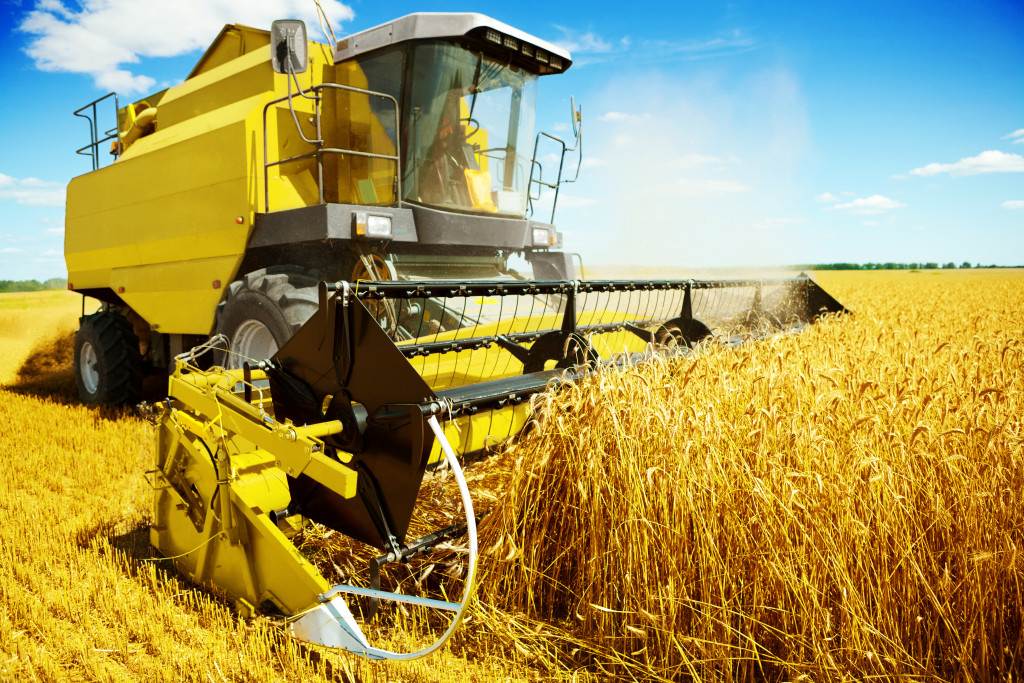Technology has grown and expanded to help make agriculture a booming industry. There are many ways in which the use of technology benefits agribusinesses, from better quality produce to advanced irrigation systems that conserve water. All of this is done to help make the work of farmers easier and to make food distribution a more efficient process for the public. Here are some of those applications that continuously help progress this industry, and therefore the entire world.
1. Technology helps farmers better understand their crops
Crops and the soil they’re planted in are complex and in the past, farmers don’t know how to best take care of them or rely on untested methods of cultivation. But technology allows scientists to help them find better and guaranteed methods that not only produce the best crops but also longer lasting and higher quality goods. For example, it can tell farmers how many nutrients are in the soil they use to cultivate their produce. Technology also allows them to monitor their crops’ progress online through satellite imagery. Farmers are able to see what their crops look like from space which helps ensure that their farm is running smoothly.
2. Technology helps with irrigation and water conservation
With technology, farmers are able to save water and concentrate on their crops which is a major benefit for the environment. It helps reduce the amount of water that needs to be used in irrigation which makes agriculture more economical and efficient. In addition, it also reduces waste when harvesting because farmers can use precise measurements when irrigating and cleaning their crops. Technology allows them to conserve water that is used in irrigation through drip-farming and other applicable methods.
3. Technology helps improve the quality of produce
Technology also helps farmers improve the quality of their goods by decreasing damage from insects, mold growth, and spoilage. It prevents food waste so there’s no need for any farmer to throw away harvested crops due to damage too extensive to be used or sold.
4. Technology helps farmers produce more crops
Technology also increases the speed of crop production, making it much easier to provide food for an increasing population. For example, advanced technology helps automate farm work like irrigation, avoiding excess water flow and wasted resources while analyzing soil acidity to allow the best possible distribution of fertilizer. This results in a significantly greater yield.
5. Technology assists in the packing, shipping, and selling of agricultural products

When it comes to the distribution of these crops, technology can help with that too. Technology is used in packing facilities to automate the process of getting fruits and vegetables into boxes for transport. For example, auto-guided carts equipped with rigging chains and lifting hooks are able to carry up to 400 pounds of produce around an area without spilling them, making it easier for employees to quickly pick out food. The same technology is also used by warehouses when combining orders to be shipped. This technology is also used in grocery stores and supermarkets where customers can see which specific produce it is that they’re buying through tracking devices on each package rather than having to guess or assume.
6. Technology helps guarantee food safety
There is a certain level of risk when harvesting crops because natural disasters like drought or flooding could destroy everything. And sometimes even human error can lead to loss of crops. Technology has helped reduce these unknown risks by making food safety a top priority. For example, technology helps minimize the time it takes for crops to be harvested and distributed which reduces the chance of spoilage or contamination with E. coli or other harmful bacteria that could potentially cause health problems in humans.
7. Technology provides information to consumers about where their food comes from
Consumers are able to trace the path of their food right back to where it was grown. This is possible by scanning a unique identification number on each package which adds information about the farm and what type of produce is in a bag or box. This is called Food Technology, constantly working with grocery stores and supermarkets to keep track of products on their shelves, ensuring that they are always available for customers.
Technology has had a profound effect on the agricultural industry. It has helped to increase crop production, improve the quality of produce, and reduce the amount of water used in irrigation. In addition, technology also helps with food safety and provides information to consumers about where their food comes from. These are just some of the ways that technology benefits agribusinesses.